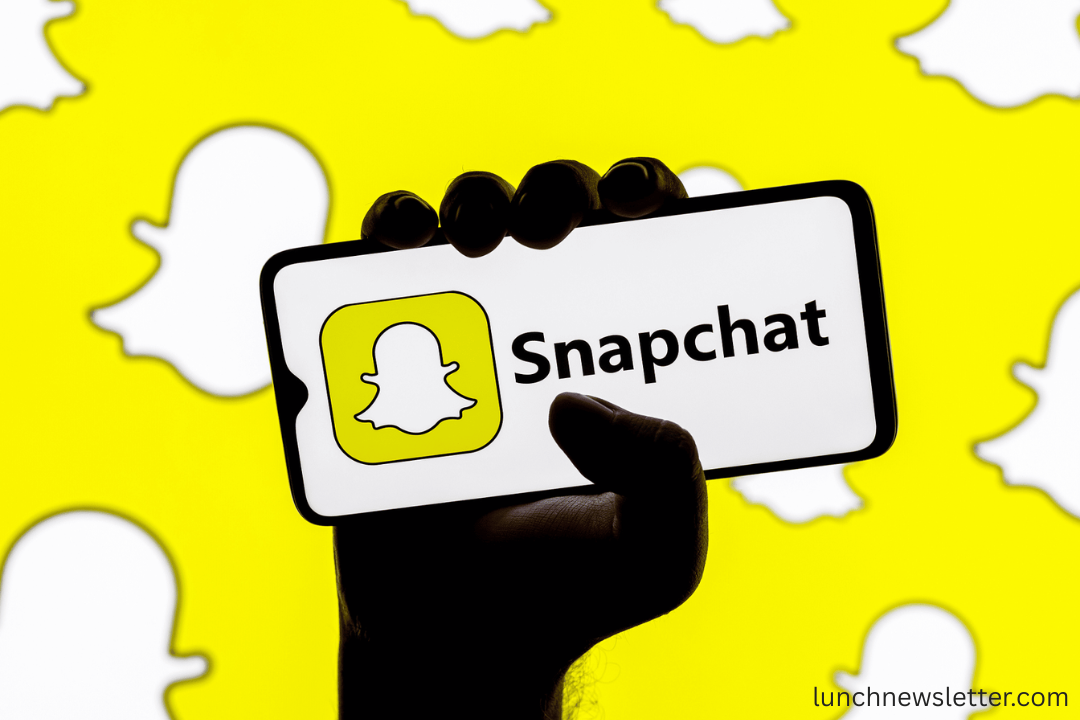Snapchat, the popular multimedia messaging app known for its unique ephemeral content, has decided to abandon plans to launch a simplified “Lite” version of its application. This development marks a shift in Snapchat’s strategy as it refocuses efforts on enhancing its core app rather than developing a pared-down alternative. The decision comes amid increased competition and the company’s desire to optimize user experience without fragmenting its platform.
The move to cancel the Lite app raises essential discussions about Snapchat’s priorities, user base diversity, and how social media platforms balance innovation with accessibility. This article explores the reasons behind Snapchat’s choice, the implications for its global users, and what this means for the broader mobile app market.
What Was the Snapchat Lite App?
The Snapchat Lite app was envisioned as a smaller, faster, and less data-intensive version of the main Snapchat app. Lite apps are typically designed for users in regions with limited internet connectivity or lower-end devices. Several social media giants, including Facebook and Twitter, have successfully launched Lite versions to capture emerging markets.
For Snapchat, launching a Lite app could have expanded its reach in countries where mobile networks are slower or more expensive and smartphone hardware is less powerful. The Lite app was expected to offer core Snapchat features like Stories, messaging, and filters but in a streamlined package requiring less storage and data.
Why Did Snapchat Call Off the Lite App?
Several strategic and technical factors influenced Snapchat’s decision to scrap the Lite app:
Focus on Core Experience
Snapchat prioritizes delivering a rich, immersive experience through augmented reality (AR), interactive filters, and multimedia features. The Lite app would have required stripping down these capabilities, potentially weakening the Snapchat brand and user engagement.
Technical Challenges
Developing and maintaining two distinct apps can increase complexity and costs. Ensuring feature parity, security updates, and smooth performance across both versions is resource-intensive, especially for a platform as dynamic as Snapchat.
Market Analysis
Snapchat’s internal data likely showed that the majority of its users have access to devices and networks capable of supporting the entire app. Instead of diluting efforts, the company aims to optimize the existing app for better performance on a variety of devices.
Competitive Landscape
Competitors such as Instagram and TikTok have focused on enhancing their primary apps rather than releasing Lite versions. Snapchat may have decided that doubling down on innovation within its flagship app is a better long-term strategy.
Impact on Snapchat’s Global User Base
Snapchat has a diverse global audience, with significant usage in North America and Europe and increasingly in parts of Asia and Latin America. Due to bandwidth constraints and device limitations, emerging markets often benefit from Lite apps.
By canceling the Lite app, Snapchat risks missing some potential users in regions where connectivity is a barrier. However, the company is pursuing alternative approaches to improve accessibility and performance:
- App optimization: Ongoing updates focus on reducing app size and improving speed.
- Data-saving modes: Features to minimize data consumption during use.
- Localized content and partnerships: Tailoring experiences that resonate with specific regions.
These strategies allow Snapchat to maintain a unified user base while addressing some concerns the Lite app was meant to solve.
Snapchat’s Strategy Moving Forward
Snapchat is focusing on innovation within its main app to retain and grow its user base. Some key areas of investment include:
Augmented Reality and Lenses
Snapchat is a pioneer in AR filters and interactive lenses, continually introducing creative tools that engage users. Enhancing these features helps Snapchat differentiate itself from competitors and encourages longer app usage.
Video and Stories Features
With the popularity of short-form video content booming, Snapchat invests heavily in improving video sharing, Stories, and Spotlight—its answer to TikTok’s viral video feed.
Monetization and Advertising
Snapchat is expanding ad products and partnerships, allowing brands to reach targeted audiences with immersive content. Enhancing ad formats and analytics remains a priority.
Privacy and Safety
The platform emphasizes user privacy and safety through better controls, content moderation, and transparency, strengthening user trust.
How Does Snapchat Compare to Other Lite Apps?
While Snapchat shelved its Lite app, other social platforms have seen success with lightweight versions:
- Facebook Lite: Designed for low-end Android devices and slower networks, it boasts hundreds of millions of users.
- Twitter Lite: Offers faster load times and offline access in emerging markets.
- Instagram Lite: Streamlined for quick access with essential features.
These apps show that Lite versions can be valuable for expanding reach but may not align with every platform’s vision or technology demands.
Challenges of Maintaining Multiple App Versions
Developing both a standard and Lite app presents several challenges:
- Feature consistency: Users expect core functions across both apps, requiring constant updates.
- Security: Ensuring both apps are secure against vulnerabilities demands additional resources.
- User confusion: Offering multiple apps can split the user base and complicate support.
- Resource allocation: Diverting engineering and design teams across two products can slow innovation.
Snapchat likely considered these factors heavily before deciding to consolidate efforts on its flagship app.
What This Means for Snapchat Users
Current Snapchat users will continue to receive updates and new features within the main app. The company’s decision may result in faster innovation and fewer disruptions caused by split development efforts.
Users in regions with slower connectivity might experience some limitations but can expect improvements from data-saving modes and app optimizations. For those with lower-end devices, Snapchat aims to enhance performance without compromising the whole app experience.
The Future of Mobile Apps and Lite Versions

The rise of Lite apps corresponds to mobile usage trends worldwide, particularly in developing countries. However, as network infrastructure improves and smartphone capabilities increase, the demand for Lite apps may decline.
Snapchat’s decision could indicate a broader industry trend where companies invest in optimizing one powerful app rather than maintaining multiple versions. This approach focuses on delivering consistent, high-quality experiences and capitalizing on emerging technologies like 5G and AI.
How Snapchat Can Continue Expanding Accessibility
Even without a Lite app, Snapchat can reach wider audiences by:
- Enhancing app efficiency for lower-spec devices.
- Partnering with telecom providers to offer data bundles.
- Introducing offline or low-bandwidth modes.
- Creating localized, culturally relevant content.
- Supporting multiple languages and regional preferences.
Such strategies help Snapchat grow organically in diverse markets without fragmenting its platform.
Frequently Asked Questions (FAQ’s)
Why did Snapchat cancel its Lite app?
Snapchat canceled its Lite app to focus on enhancing the core app experience, avoiding the complexities of maintaining two versions and preserving its rich features.
What was the purpose of the Snapchat Lite app?
The Snapchat Lite app was intended to be a smaller, faster version of the main app designed for users with slower internet connections or lower-end devices.
Will Snapchat users in regions with poor connectivity be affected?
Snapchat is optimizing its main app with data-saving modes and performance improvements to serve users in areas with limited connectivity, minimizing any negative impact.
How does Snapchat’s decision compare to other social media platforms?
Unlike Snapchat, platforms like Facebook and Twitter have successfully launched Lite apps to capture emerging markets, but Snapchat chose to prioritize innovation in its flagship app.
Does the cancellation of the Lite app mean Snapchat is less accessible?
No, Snapchat plans to improve accessibility through app optimization, partnerships, and features that reduce data usage without compromising user experience.
How will this decision affect Snapchat’s future updates?
Focusing on a single app allows Snapchat to innovate faster, particularly in areas like augmented reality, video features, and user engagement.
Are there any alternatives for users with older devices?
Snapchat is working on optimizing its main app for lower-spec devices and introducing features that enhance performance on such hardware?
What should users expect from Snapchat moving forward?
Users can expect continued improvements in AR lenses, video content, privacy features, and an overall enhanced user experience without fragmenting the app ecosystem.
Conclusion
Snapchat’s cancellation of its Lite app project highlights the company’s commitment to innovation and delivering a rich user experience. While Lite apps have their place, Snapchat’s choice reflects confidence in its main app’s adaptability and performance. Focusing on AR, video content, and seamless user engagement positions Snapchat well for future growth. By optimizing its flagship app and adopting innovative accessibility measures, Snapchat aims to satisfy users worldwide without sacrificing the unique features that define its brand. As mobile technology evolves, Snapchat’s strategic focus will likely inspire other platforms to reconsider the balance between simplification and full-featured experiences.
